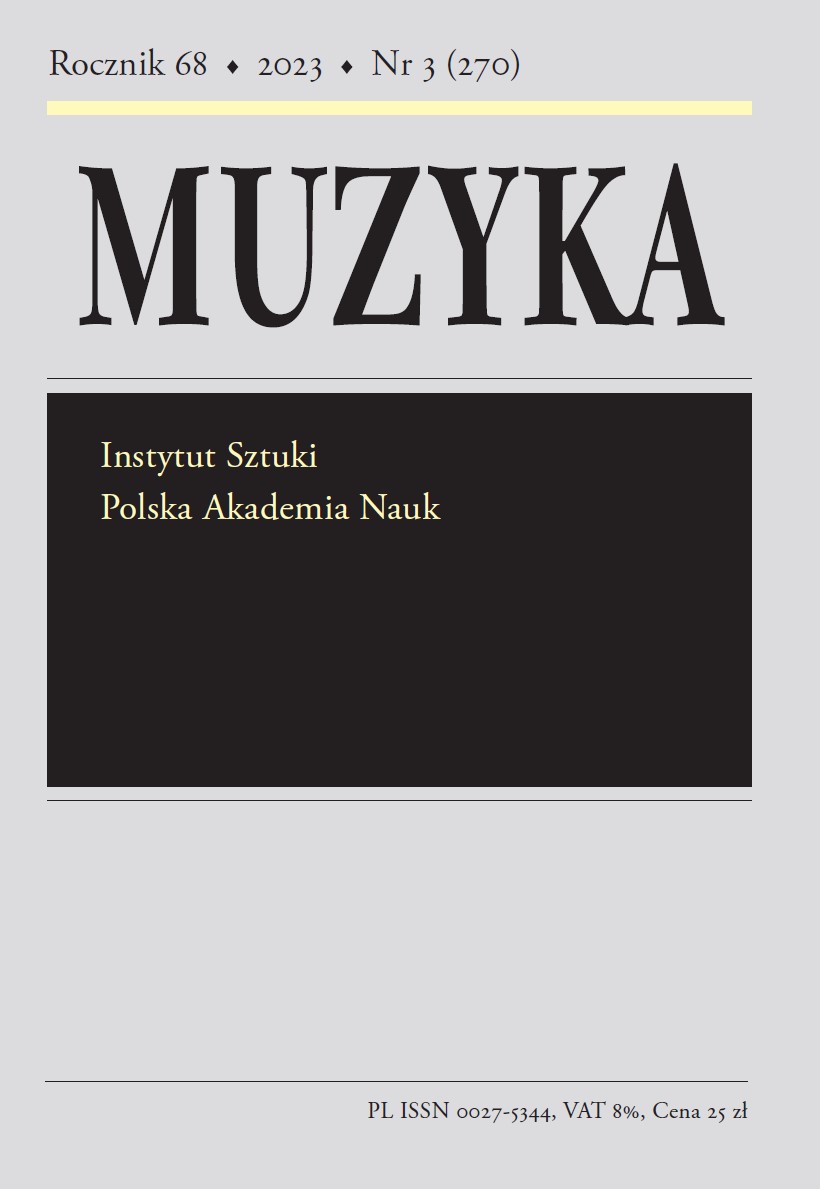Życie muzyczne w warszawskim kościele kanoników regularnych pod wezwaniem św. Jerzego w świetle księgi rachunków Bractwa Aniołów Stróżów (1743–1771)
Musical Life at the Canons Regular Church of St George in Warsaw in Light of the Accounts Book of the Guardian Angels Confraternity (1743–1771)
Author(s): Jolanta Bujas-PoniatowskaSubject(s): Music
Published by: Instytut Sztuki Polskiej Akademii Nauk
Keywords: Guardian Angels Confraternity;Canons Regular;eighteenth-century musical culture;Warsaw’s ensembles
Summary/Abstract: One hitherto unknown centre of musical activity in eighteenth-century Warsaw was the now non-existent Canons Regular church of St George on Świętojerska Street. St George’s was the meeting place for the Confraternity of the Guardian Angels, consisting mostly of merchants, which was founded in 1707 or before. The brotherhood’s book of accounts for 1746–71, previously not studied in depth, allows us to draw conclusions concerning not only the organisation itself, but also the funds that it assigned to music. This article analyses the book’s records in order to reconstruct a picture of music-making at St George’s under the aegis of the confraternity. The analysis divides the expenditure into funds for the ensemble, the trumpeters and the timpanists; there are also individual entries relating to the organist’s fees and the purchase of hymn books. The ensemble employed by the confraternity was probably either assembled from Warsaw musicians or else a permanent group of the Canons Regular at St George’s. The ensemble, typically made up of eleven musicians, performed mainly at fairs held on the feast days of SS Philip and James, St Stanislaus, SS Peter and Paul, the Visitation of Mary, St Michael, and the Holy Guardian Angels. The four trumpeters and the timpanists, on the other hand, were hired to perform during processions. The recorded expenditure includes the musicians’ fees, probably paid in cash, as well as amounts paid for their food; the sums range from small to quite substantial. The article is accompanied by a chronological list of music-related expenses itemised in the accounts book, together with the names of the feasts embellished by music from the ensemble, the timpanists and the trumpeters.
Journal: Muzyka
- Issue Year: 68/2023
- Issue No: 3
- Page Range: 123-134
- Page Count: 12
- Language: Polish

